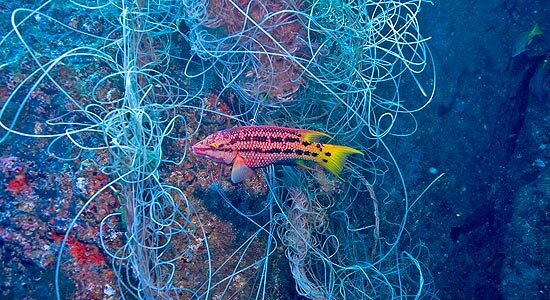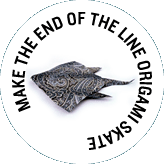Nearly half of all fish produced for food is now farmed rather than caught in the wild, a new UN report reveals.

The biennial State of World Fisheries and Aquaculture (Sofia) report shows that stocks continue to be depleted by overfishing
The amount of fish produced by farming rose in the past two years while the number of wild fish stocks ranked as over-fished, depleted or fully exploited increased to 80 per cent of the world’s stocks.
The figures released in Rome by the United Nations Food and Agriculture Organisation (FAO) indicate that the amount of fish caught at sea has reached a plateau and may be in decline when suspected over-reporting by China is taken into account.
On the other hand, the amount of fish raised by aquaculture rose to 47 per cent of all produced for food. Ichiro Nomura, assistant director general of the FAO, indicated that farming was about to take over from wild capture as the most important source of fish for the first time. He said: “A milestone may be near.”
The biennial State of World Fisheries and Aquaculture (Sofia) report shows that stocks continue to be depleted by overfishing.
Around half the world’s fisheries (52 per cent) now rank as fully exploited and are producing catches that are at or close to their maximum levels.
Some 28 per cent are ranked as overexploited, depleted or recovering from depletion. Some 20 per cent of wild fish stocks were moderately or under-exploited, a reduction of three per cent since the FAO’s 2006 report.
Total fish production reached a record high of 143.6m tonnes in 2006 – the most recent year for which statistics are available - with 92m tonnes caught at sea and 51.7m tonnes produced through aquaculture.
More than 110m tonnes – about 77 per cent – of all fish was used for human consumption with the rest going as either livestock feed or fishmeal for aquaculture.
The Northeast Atlantic, the Western Indian Ocean and the Northwest Pacific are the areas with the highest proportions of fully- or over-exploited stocks with a combination of too many boats and highly-efficient technologies identified as the key factors affecting fisheries.
The report says progress in tackling the problem of overfishing has been slow.
“There has been only limited progress in mainstreaming precautionary and ecosystem approaches to fisheries, eliminating bycatch and discards, regulating bottom-trawl fisheries, managing shark fisheries and dealing with illegal fishing,” it says.
Fishing and aquaculture is of vital importance to the developing world with an estimated 43.5m people, mostly in Asia, directly involved, either full or part time, in fishing fleets or fish farms, the report states.
Once related industries such as processing and marketing are taken into account more than 500m people depend on the sector for their livelihood.
Representatives from more 60 countries are meeting at the FAO HQ in Rome to discuss the report’s findings.
Other key facts in the report
- Fish provides more than 2.9 billion people with at least 15 percent of their average per capita animal protein intake.
- It contributes at least 50 percent of total animal protein intake in many small island developing states as well as in Bangladesh, Cambodia, Equatorial Guinea, French Guiana, the Gambia, Ghana, Indonesia and Sierra Leone.
- Direct employment and jobs in related industries are important for developing countries with fisheries exports worth $24.6 billion annually.
- The world’s motorized fishing fleet totals around 2.1m vessels. The vast majority (90%) measure under 12 metres in length. Some 23 000 are large-tonnage “industrialized” vessels.
- The nationality of several thousand of these is unknown—this “unknown” category has expanded in recent years in spite of global efforts to eliminate illegal fishing.
![]()



0 Responses to “Farmed fish set to overtake wild caught fish for first time”
Leave a Reply